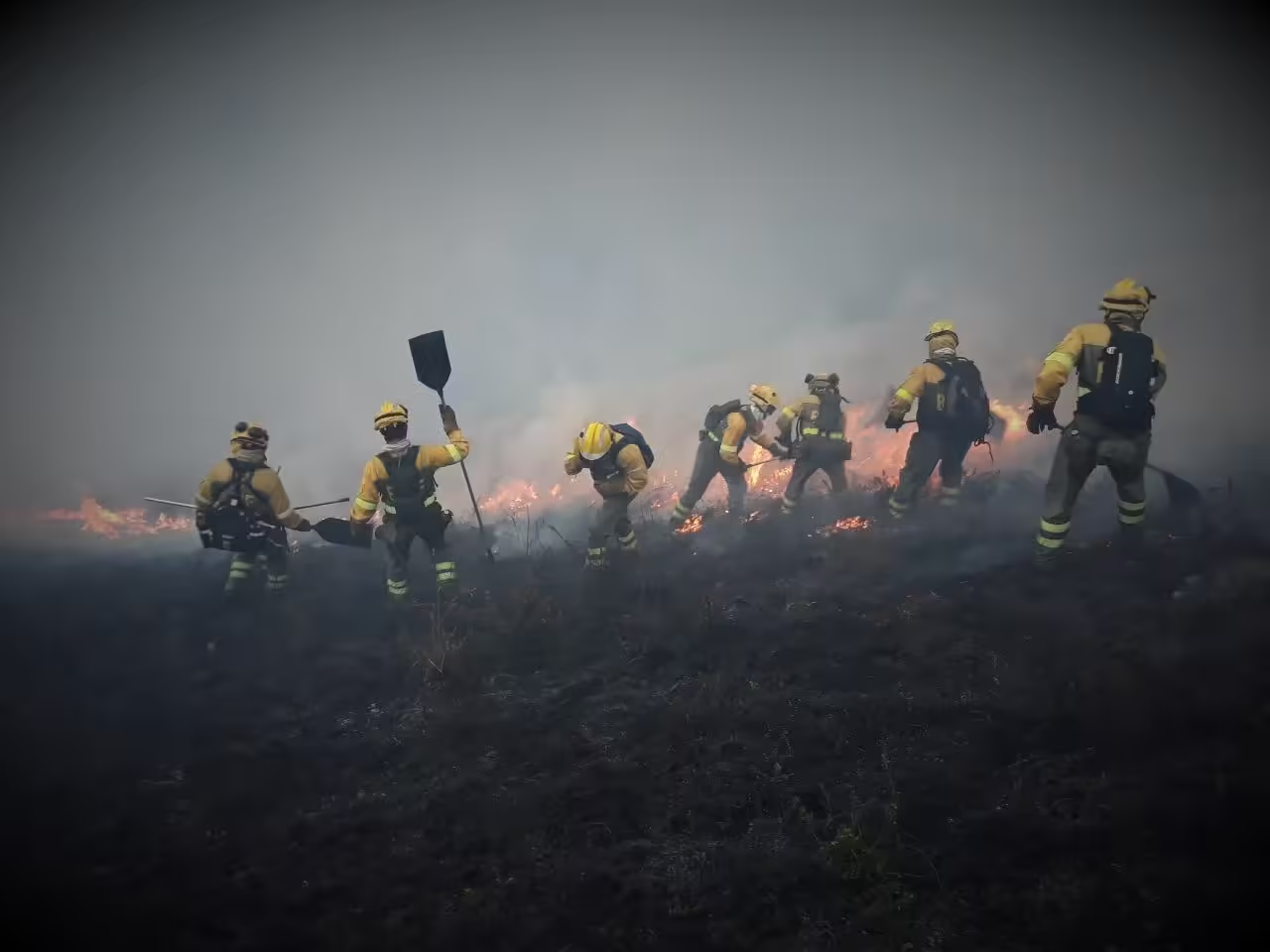Spain Faces 141 Climate Risks Affecting Health, Economy, and Nature
Spain is facing a growing number of climate risks that could affect its people, economy, and environment. The Climate Change Risk and Impact Assessment in Spain (ERICC-2025 based on it initials in Spanish) identifies 141 different risks, highlighting that 51 are high-risk due to their severity or immediacy, and 17 are low-reversibility risks, meaning their impacts could be permanent unless action is taken quickly.
The report was developed between 2023 and 2025 by a consortium of scientific institutions, including IH Cantabria, Tecnalia, and the Basque Centre for Climate Change (BC3). It analyses 14 sectors critical to Spain’s future: health, water, biodiversity, forests, agriculture, coastal areas, energy, cities, tourism, industry, transport, cultural heritage, the financial system, and social cohesion.
This assessment is a key technical tool for the National Climate Change Adaptation Plan 2026–2030 (PNACC). It is designed to guide policymakers in preparing Spain for the impacts of climate change across multiple regions and sectors.
Extreme Weather Already Affecting Spain
Extreme climate events are no longer theoretical. Vice President and Minister for Ecological Transition, Sara Aagesen, has emphasized that heatwaves, droughts, and torrential rains are already more frequent and severe.
Recent events, such as DANA Alice, illustrate these risks. In early October 2025, this severe low-pressure system caused heavy rainfall and flash floods across eastern Spain, especially in Murcia, Alicante, and Valencia, forcing evacuations, damaging roads and homes, and putting pressure on local emergency services.
The ERICC-2025 report notes that such events directly affect people’s daily lives, safety, and wellbeing, especially in rural, coastal, and vulnerable communities. Flooding can destroy crops and livestock, disrupt water supplies, and damage homes and infrastructure, while heatwaves increase the risk of heat-related illnesses and strain hospitals.
Risks That Could Become Permanent
Among the 17 low-reversibility risks, the report highlights several that could have irreversible consequences if no preventive action is taken:
- Loss of biodiversity: Habitat destruction and climate stress could lead to species extinction, threatening ecosystems that provide essential services such as pollination and flood protection.
- Soil and ecosystem degradation: Desertification, erosion, and reduced soil fertility can compromise agriculture and natural landscapes.
- Salinisation of coastal aquifers: Rising sea levels push saltwater into freshwater reserves, endangering drinking water and irrigation.
- Loss of land through erosion and rising seas: Coastal and riverbank erosion can permanently reduce habitable and arable land.
- Damage to cultural and natural heritage: Floods, storms, and heatwaves threaten historic buildings, archaeological sites, and protected natural areas.
These risks illustrate how climate change can produce long-lasting effects on Spain’s territory and economy if measures are not implemented promptly.
Interconnected Risks
The ERICC-2025 report identifies over 1,700 interconnections between climate risks. For example:
- Water scarcity affects agriculture: Droughts reduce irrigation capacity, leading to crop failures and higher food prices.
- Extreme heat affects health and economy: Heatwaves increase hospital admissions and reduce workforce productivity.
- Flooding impacts multiple sectors: Roads, energy supply, and tourism can all be disrupted by storms and river overflow.
Understanding these connections is crucial, as isolated solutions may not be enough. Coordinated planning across sectors is essential to reduce cascading impacts.
Rising Temperatures and Expanding Dry Zones
The report projects that average temperatures in Spain could rise by 2–3°C by 2050 and by 5–6°C by the end of the century in worst-case scenarios.
Currently, arid climates cover more than 20% of Spain, and they are expected to expand further. This could worsen water scarcity, reduce crop yields, and increase wildfire risk. DANA Alice has shown how these risks can converge, with extreme rain hitting already dry soil, leading to floods, landslides, and erosion.
Coastal and Forest Risks
- Sea-level rise: Coastal areas could see levels rise 50–60 cm by 2100, threatening homes, ports, tourism, and ecosystems.
- Wildfire risk: Mediterranean forests may face up to 30% more wildfires, with longer and more intense fire seasons, threatening communities, infrastructure, and biodiversity.
Coastal erosion and wildfires are examples of risks that can have cascading effects, combining economic loss, displacement of people, and destruction of habitats.
Societal Impacts
Some communities are particularly vulnerable:
- Rural communities: Dependence on agriculture and limited access to resources makes them highly susceptible to droughts and floods.
- Coastal populations: Rising seas and storms threaten housing, tourism, and local economies.
- Urban poor: Inadequate housing and infrastructure increase exposure to floods and heatwaves.
The report stresses the need for targeted interventions to protect these populations, including early warning systems, resilient infrastructure, and local adaptation plans.
Adaptation and Prevention
The ERICC-2025 report recommends several adaptation strategies:
- Water management: Efficient irrigation, desalination, and conservation programs.
- Ecosystem restoration: Reforestation and soil protection to reduce erosion and desertification.
- Infrastructure resilience: Designing roads, buildings, and energy systems to withstand extreme weather.
- Public education: Raising awareness of climate risks and how to prepare.
By implementing these measures, Spain can reduce damage from future events, improve resilience, and protect people, ecosystems, and the economy.
Societal and Economic Impacts
Climate change doesn’t just threaten the environment; it affects people’s lives and livelihoods. Extreme weather events like DANA Alice or the deadly flash floods from the DANA in Valencia in 2024 have tragically resulted in loss of life, highlighting the human cost of these risks. Flooding, heatwaves, and wildfires not only endanger communities but also put pressure on emergency services and healthcare systems.
Economically, the ERICC-2025 report indicates that climate risks can have serious financial consequences. Damage to homes, infrastructure, and agricultural production, combined with lost tourism revenue and increased healthcare costs, could cost Spain billions of euros annually if action is not taken. Coastal erosion and rising seas, for example, threaten ports, resorts, and cities that are vital to the local and national economy.
By recognizing both the human and economic stakes, the ERICC-2025 report reinforces the urgency of coordinated adaptation measures. Protecting vulnerable populations, restoring ecosystems, and improving infrastructure are essential steps to safeguard both lives and livelihoods in Spain’s rapidly changing climate.
Share this content:




Post Comment